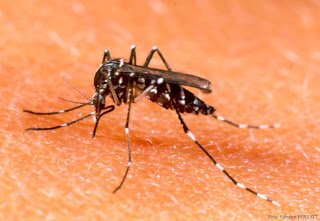NCP DHF - Nursing Diagnosis Interventions : Hyperthermia
Hyperthermia is elevated body temperature due to failed thermoregulation that occurs when a body produces or absorbs more heat than it dissipates. Extreme temperature elevation then becomes a medical emergency requiring immediate treatment to prevent disability or death.
Dengue hemorrhagic fever is a severe, potentially deadly infection spread by certain species of mosquitoes (Aedes aegypti).
Early symptoms of dengue hemorrhagic fever are similar to those of dengue fever, but after several days the patient becomes irritable, restless, and sweaty. These symptoms are followed by a shock -like state.
Bleeding may appear as tiny spots of blood on the skin (petechiae) and larger patches of blood under the skin (ecchymoses). Minor injuries may cause bleeding.
Shock may cause death. If the patient survives, recovery begins after a one-day crisis period.
Early symptoms include: Decreased appetite, Fever, Headache, Joint aches, Malaise, Muscle aches, Vomiting.
Acute phase symptoms include:
- Restlessness followed by: Ecchymosis, Generalized rash, Petechiae, Worsening of earlier symptoms
- Shock-like state : Cold, clammy extremities, Sweatiness (diaphoretic)
Nursing Diagnosis and Interventions for Dengue Hemorrhagic Fever (DHF) :
Hyperthermia related to the dengue virus infection.
Goal: Hyperthermia can be resolved
Expected outcomes: body temperature returned to normal
Intervention
1) Observation vital signs, especially temperature.
2) Give cold compress (water) on the forehead and armpits.
3) Change clothes that have been soaked with sweat.
4) Encourage the family to put on clothing that can absorb sweat like cotton.
5) Encourage your family to drink lots of approximately 1500 to 2000 cc per day.
6) collaboration with doctors in Therapy, febrifuge.
